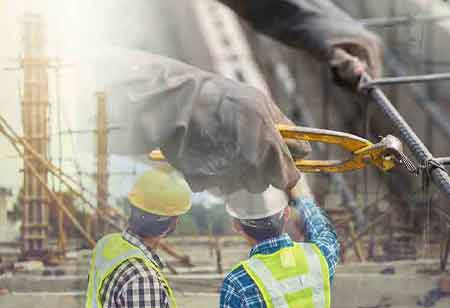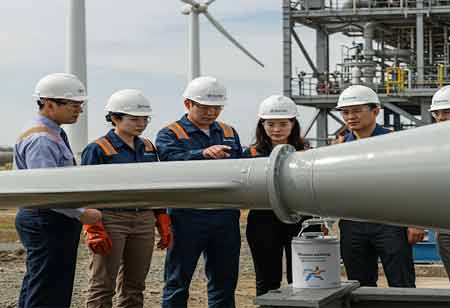Thank you for Subscribing to Construction Business Review Weekly Brief
Specials
- Apartment and Condominium Contractors Canada
- Decking Canada
- Architectural Glass Europe
- MEP APAC
- Construction Saudi Arabia
- German Apartment and Condominium Contractors
- Construction Law APAC
- Outdoor Construction
- Foundation Construction Canada
- MEP Canada
- Kitchen and Bath
- Cold Storage Construction APAC
- Precast Concrete Europe
- Construction Staffing Europe
- Pre-Construction Services
- Flooring System APAC
- Scaffolding Canada
- Swimming Pool Construction Canada
- Construction Management Canada
- Cold Storage Construction Canada
- Flooring Systems Europe
- Residential Construction
- Concrete Canada
- Construction Cladding Europe
- Construction Cladding APAC
- Concretes, Aggregates and Construction Materials APAC
- Concretes, Aggregates and Construction Materials Europe
- Commercial Contractors Europe
- Commercial Contractors APAC
- Dummy
- Construction Insulation, Coating and Waterproofing
- Construction Management APAC
- Landscaping Canada
- Construction Coating Europe
- Construction Tech Startups Europe
- Insulation Services Europe
- Mechanical Contractor Canada
- Mould Remediation and Testing Europe
- Swimming Pool Construction APAC
- Building Sealing Solutions Europe
- Construction Engineering Services
- Mechanical Electrical and Plumbing
- Roofing Systems Europe
- Architectural Glass APAC
- Startups APAC
- Construction Forensic and Owners Representative
- Flooring System
- Waterproofing APAC
- Wall Systems
- Safety and Compliance Europe
- Construction Equipment
- Modular and Prefab Construction
- Architectural Glass
- Construction MENA
- Construction Demolition and Recycling Europe
- Modular Construction Europe
- Construction Interiors
- Steel Building APAC
- HVAC
- Doors and windows
- Modular Construction APAC
- Building Information Modeling APAC
- Sustainable Construction APAC
- Building Restoration and Maintenance
- Commercial Contractors
- Specialty Construction
- Construction Engineering Canada
- Construction Engineering MENA
- Modular Construction Canada
- Construction Demolition Canada
- Roofing and Siding Systems
- Construction Latam
- Construction Staffing
- Roofing Systems APAC
- Construction Consulting
- Steel Building Europe
- Construction Demolition and Recycling APAC
- Safety and Compliance APAC
- Concretes, Aggregates and Construction Materials
- Construction Cladding
Trending Technology Trends In Field Of Bridge Design & Construction
Its breakthrough solution can avoid costly damages that might occur if concrete fractures are not get filled or corrected.

By
Construction Business Review | Wednesday, December 01, 2021
Stay ahead of the industry with exclusive feature stories on the top companies, expert insights and the latest news delivered straight to your inbox. Subscribe today.
Fremont, CA: The fast development of new technology and materials has resulted in significant changes in how bridges get designed. Engineers did not previously have the tools or software to generate realistic bridge models or extensive analyses. However, bridge engineers now have access to new innovative building processes, materials, equipment, and software with today's technological advancements.
Let's see some of the top New Advanced Bridge Design and Construction Technologies.
- Building Information Modeling (BIM)
Building Information Modeling (BIM) is a procedure that integrates architects, engineers, and construction (AEC) professionals more effectively throughout the building process. Engineers and designers use BIM technology to produce 3-D models that comprise data ranging from a building's physical qualities to its functional aspects. Such data brings architects, engineers, and construction experts together in multidisciplinary cooperation to better understand the project they are working on.
- Innovative new construction materials for bridges
In the world of civil engineering, new building materials are developing. Self-healing concrete is the most innovative building material being studied for bridge design today. Concrete is prone to cracking during it's life cycle and due to the diverse stresses in bridges. On the other hand, new concrete combinations, having limestone-producing bacteria, are being developed to fill fractures as they occur. Its breakthrough solution can avoid costly damages that might occur if concrete fractures are not get filled or corrected.
Check Out This : Life Sciences Review
- Smart Construction
Digital technology is now affecting and reshaping the construction sector at a rapid pace. AI, VR, Drones, Site Robots, and other smart construction approaches and concepts are currently helpful on every building site. Bridges are not exempt from this rule. Drones with LIDAR sensors and GPS tracking are commonly employed smart construction technologies in bridge design. Bridge engineers can locate the exact area on which the bridge will stand by employing these drones, considerably reducing mistakes.





